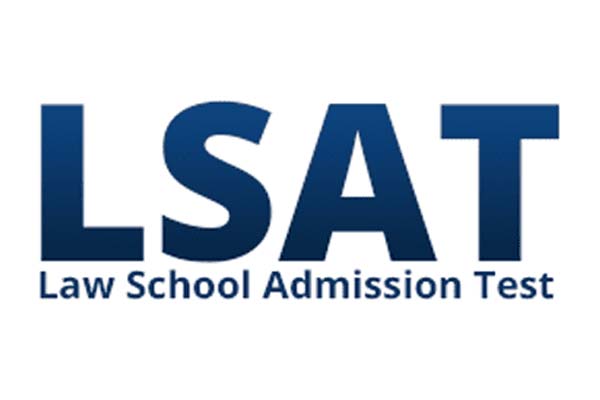Does Stanford Require SAT? Clearing Up the Confusion
Nestled in Stanford, California, Stanford University is a distinguished private research institution celebrated for its academic prowess and rigorous admissions standards.
Boasting an undergraduate community of around 7,100 students and a graduate cohort numbering approximately 9,500, the university is a beacon of higher education.
Stanford University has a holistic admissions process, which means that the admissions committee considers a wide range of factors when evaluating applicants.
The university considers an applicant’s academic performance, extracurricular activities, essays, letters of recommendation, and unique circumstances.
Regarding standardized testing, Stanford University is test-optional for the 2023-2024 admission cycle. This means applicants are not required to submit ACT or SAT scores for full consideration.
However, applicants may still submit test scores if they believe it will strengthen their application. In previous admission cycles, Stanford has admitted students who submitted test scores and students who did not.
The acceptance rate for Stanford University is consistently low, with an average acceptance rate of 4% over the past few years. This means the admissions process is highly competitive, and applicants must have exceptional academic credentials and a solid overall application to be considered.
In terms of admission requirements, Stanford University requires applicants to submit the following:
- Common Application or Coalition Application
- Application fee or fee waiver request
- Official high school transcript
- School report and counselor recommendation
- Two teacher recommendations
- Mid-year transcript (if available)
- Final transcript (upon graduation)
SAT Requirements at Stanford
Renowned for its academic excellence, Stanford University draws thousands of applicants annually. A common inquiry among prospective students is whether submitting SAT scores is necessary for admission consideration.
Testing Requirements
Applicants for the 2022-23 and 2023-24 admission cycles at Stanford University can now opt not to submit ACT or SAT scores. This policy ensures that choosing not to provide standardized test scores won’t put students at a disadvantage. Nevertheless, applicants are encouraged to submit their scores if they believe it will strengthen their overall application.
Average SAT Scores
While Stanford University has adopted a test-optional policy, it is still helpful to know the average SAT scores of admitted students.
🌟 Hey Students! 🚀 Ready for the ultimate experience? Join us on Studentsinside.com's Facebook, YouTube, WhatsApp, and LinkedIn. Click now for tips, fun, and success vibes! 🌈✨ #StudentLife #JoinUs
According to PrepScholar, the average SAT score of admitted students is 1500. However, it is essential to note that this is just an average, and no specific minimum score is required for admission.
Other Testing Requirements
While ACT or SAT scores are not required for admission, there are still other testing requirements that students must meet. For example, international students whose first language is not English must submit TOEFL or IELTS scores to demonstrate their proficiency in English. Additionally, some majors may require additional testing, such as subject tests.
Understanding Stanford’s Test Optional Policy
Stanford University lets you apply for the 2023-24 term without SAT or ACT scores if you prefer. You don’t have to submit them for admission. Stanford is still figuring out the testing rules for the next application rounds.
The decision to become test-optional was made in response to the challenges related to COVID-19. The pandemic disrupted the administration of standardized tests, making it difficult for students to take them. By becoming test-optional, Stanford aims to remove barriers to admission for students who may have yet to have the opportunity to take standardized tests.
Skipping standardized tests when applying to Stanford won’t harm your chances. Still, it’s worth noting that the university sees these tests as valuable indicators of academic readiness.
If you opt out of submitting scores, consider highlighting your academic strengths using factors like grades, challenging coursework, and involvement in extracurricular activities.
Stanford’s test-optional policy applies to both first-year and transfer applicants. The university also accepts self-reported test scores, meaning applicants can report them on their application without sending official score reports. If an applicant is admitted and chooses to enroll at Stanford, they must submit official score reports.
ACT Requirements and Considerations
Stanford University does not require ACT scores for full consideration for first-year and transfer students applying in the 2023-24 admission cycle.
However, applicants are encouraged to include their ACT scores if they believe it will enhance their application. During the admission cycles from 2020 to 2023, Stanford accepted students both with and without ACT scores.
While ACT scores are optional, it is essential to note that they are still considered as part of the application review process. The admissions committee will review an applicant’s ACT scores, along with other application components, to gain a better understanding of their academic abilities and potential. Therefore, applicants who submit their ACT scores should aim to achieve a competitive score.
It is also worth noting that Stanford does not have a minimum ACT score requirement for admission. However, the average ACT score for admitted students is 34 out of 36. This means that while a perfect score is not necessary, a high score can certainly enhance an applicant’s chances of admission.
In addition to submitting ACT scores, applicants are also required to submit other application components, including the Common Application, a $90 nonrefundable application fee or fee waiver request, a School Report form and counselor letter of recommendation, official transcripts or academic results, and letters of recommendation from two teachers.
Holistic Review Process at Stanford
Stanford University practices a holistic review process for undergraduate admissions.
Each application is reviewed as a whole, considering various factors such as academic achievement, personal background, life experiences, intellectual contributions, and character.
The admissions committee at Stanford takes a thorough and thoughtful approach when evaluating applicants. They assess every aspect of a candidate’s profile to ensure a well-rounded and informed decision.
This holistic review process encompasses factors like academic performance, extracurricular activities, essays, letters of recommendation, and standardized test scores.
However, the admissions committee still needs to set a formula for evaluating applications. Instead, they look at each application in its entirety, taking into account each applicant’s unique circumstances and experiences.
The holistic review process at Stanford takes into account various factors, with GPA being a crucial element. There isn’t a set minimum GPA requirement, and the average GPA of admitted students fluctuates annually.
The admissions committee also evaluates the rigor of the high school curriculum an applicant pursued and takes into consideration any extenuating circumstances that may have influenced their academic performance.
Diversity is also an essential consideration in the holistic review process at Stanford. The university seeks to admit diverse students from different backgrounds, cultures, and experiences.
This includes students from underrepresented groups, first-generation college students, and students with unique talents or achievements.
Additional Admission Requirements
Stanford University requires more than just the Common Application and a $90 nonrefundable application fee or fee waiver request for admission. There are additional admission requirements to consider.
Test Scores
Stanford University is test-optional for the 2023-24 application cycle, so students are not required to submit ACT or SAT scores for full consideration.
However, applicants who choose to submit test scores will not be at a disadvantage. In previous admission cycles, Stanford admitted students who submitted test scores and those who did not.
School Report Form and Counselor Letter of Recommendation
Applicants are required to submit a School Report form and a counselor letter of recommendation. The School Report form should be completed by the applicant’s high school counselor and include information about the applicant’s academic performance, extracurricular activities, and personal qualities.
The counselor’s letter of recommendation should provide additional insight into the applicant’s character, achievements, and potential.
Official transcript (s) or Academic Results
Applicants must submit official transcripts or academic results from all secondary schools attended. These transcripts should include grades from all completed coursework and any courses in progress.
Letters of Recommendation from Two Teachers
Enclosed is a pair of recommendation letters from teachers who guided you in academic subjects, along with the counselor’s letter. These testimonials offer a peek into your intelligence, academic potential, and personal qualities.
Application Essay
As part of the application process, candidates are required to provide an application essay. This personal statement serves as a window into the applicant’s character, background, and interests. It offers a chance for individuals to highlight their writing prowess and showcase their capacity for critical and creative thinking.
Application Deadlines
Submit your applications for regular decision by January 3, 2024, to ensure timely processing of all materials. Early submission is encouraged to facilitate a smooth application process.
Financial Aid
Stanford University is dedicated to making education affordable for everyone, no matter their financial situation. They provide financial aid based on need, merit-based scholarships, and other forms of assistance. It’s recommended that applicants apply for financial aid when submitting their admission application.
Special Considerations for Transfer Students
Transfer students who wish to apply to Stanford University must fulfill the exact requirements as first-year applicants. However, there are some special considerations transfer students should keep in mind when applying to Stanford.
Firstly, applicants seeking transfer must provide official transcripts from every college and university they attended, encompassing high school coursework, even if the credits were later transferred. Please be aware that Stanford does not accept transfer credits from international institutions.
Secondly, transfer applicants must also submit a Transfer Mid-Term Report, which provides an update on their academic progress during the current academic year. This report must be submitted by the student’s current college or university.
Transfer applicants must note that Stanford University has a low transfer acceptance rate. In 2019, out of 2,352 transfer applicants, only 27 were accepted, translating to an acceptance rate of 1.15%. Therefore, transfer applicants must have a solid academic record and a compelling reason for transferring to Stanford.
Additionally, transfer applicants should be aware that SAT or ACT scores are not required for full consideration at Stanford for first-year and transfer students applying in 2023-24. However, it is still recommended that transfer applicants submit their scores if they have taken the exam.
Understanding Stanford’s Superscoring Policy
Stanford University follows a superscoring policy for the SAT, meaning they consider the highest individual scores from different test sittings.
This policy allows students to submit multiple test scores and have their highest scores considered, even if they were achieved on other test dates.
If a student decides to take the SAT twice, achieving a score of 650 on the Reading and Writing section in the initial test and 700 on the Math section in the subsequent one, Stanford University will take into account the highest scores—700 in Math and 650 in Reading and Writing—as the student’s overall performance.
It is important to note that Stanford only considers the highest subscores from each section of the SAT, not the overall composite score.
This means that if a student scores higher on the Math section on one test and higher on the Reading and Writing section on another, Stanford will consider both subscores as the highest.
Students who take the SAT more than once can self-report their scores on the Stanford application. However, if admitted, they must submit official score reports from the College Board.
Cost of Attendance and Financial Aid Options
Stanford University is one of the most prestigious universities in the world, but it’s also one of the most expensive. The cost of attendance for the 2023-2024 academic year is $87,833, which includes tuition, room and board, books and supplies, and personal expenses.
However, this does not include additional fees such as the New Student Orientation Fee ($525) and the Document Fee ($250) that new students must pay.
Fortunately, Stanford offers all admitted undergraduate students comprehensive, need-based financial aid. The university does not expect students to borrow to meet their needs, which means that all financial assistance is in the form of grants and scholarships that do not need to be repaid.
The financial assistance program considers a family’s income, assets, and other factors to determine a student’s demonstrated financial need.
The financial aid calculation includes direct costs such as tuition, mandatory fees, room and board, and indirect costs like books and supplies, a reasonable allowance for personal expenses, and round-trip travel expenses to and from home and campus. Stanford also offers a work-study program that allows students to earn money to help cover their costs.
Students can use the net price calculator on the Stanford website to estimate their financial aid award based on their family’s financial situation. The calculator considers family income, assets, and the number of family members in college.
In addition to need-based financial aid, Stanford also offers merit-based scholarships to a small number of students who demonstrate exceptional academic achievement or talent in a particular area. The university awards these scholarships and does not require a separate application.








